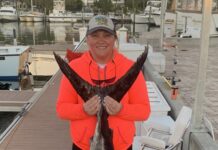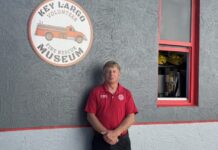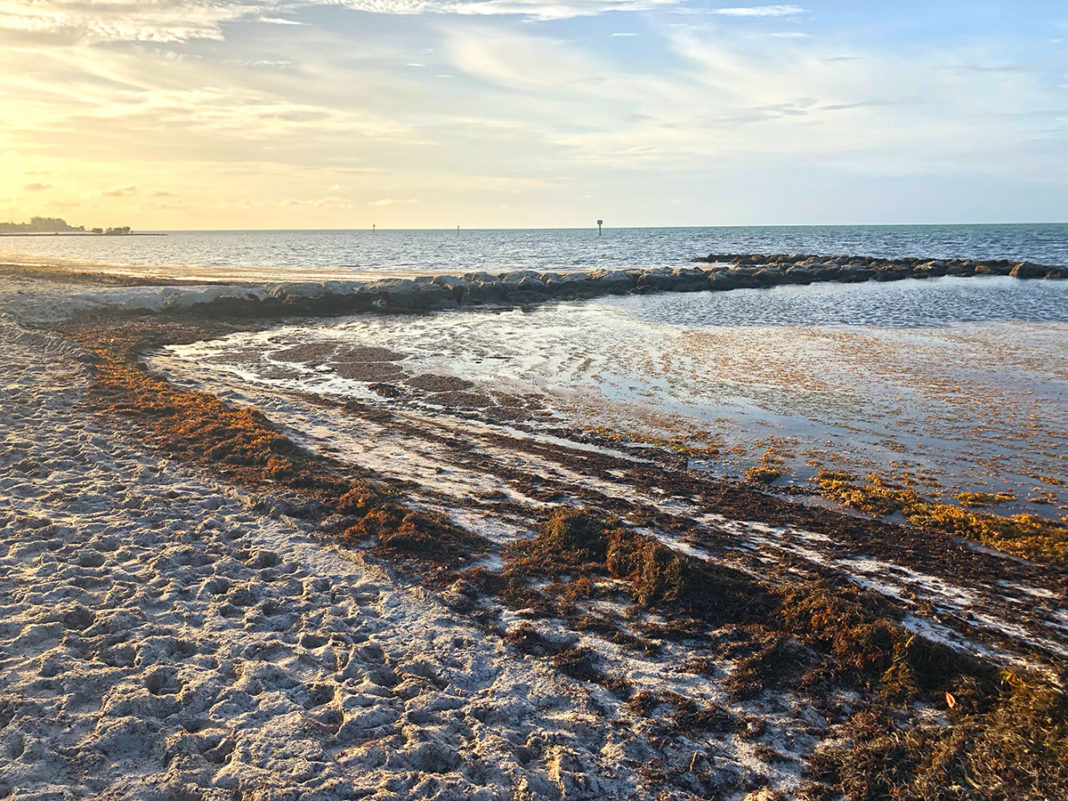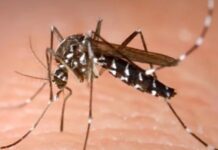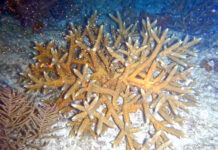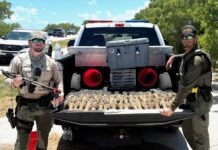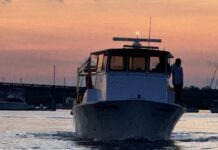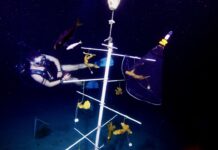by Reda Wigle
In the past several weeks, a noxious smell emanating from the beaches of the Keys has kept swimmers, sun seekers and nature lovers away from the shoreline. Rotting eggs and hot garbage are some of the descriptors bystanders used to describe the odor. The cause of the offensive scent is the record-breaking level of sargassum seaweed rotting along the water’s edge. A report published last month by the Florida Atlantic University Harbor Branch Oceanographic Institute maintains the current level of seaweed is 10 times the historic average.
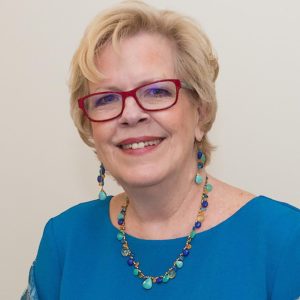
“Let’s face it, it stinks,” said Key West City Commissioner Mary Lou Hoover, whose district includes sargassum-dense Higgs Beach. Hoover is exploring options that would eliminate or at least reduce the amount of sargassum making its way to the city’s beaches. Options include a man-made floating barrier known as a boom.
“We’re currently looking at a test project using a boom for seagrass that would basically keep it from coming to shore,” said Hoover, who plans to test the boom on the area at the south end of Duval Street later this year. “If that works, it would be a great start,” said Hoover.
“Contacted by Southernmost properties, we looked at the area using Google Earth,” said Dr. Patrick Rice, chief science and research officer at FKCC, consulted with Hoover on the project. “The location and the environment have created a catcher’s mitt for the sargassum,” A primary challenge of sargassum removal is keeping up with the near-constant replenishment of it. “As soon as we empty one construction Dumpster, there’s enough to fill another,” said Hoover.
Sargassum, which takes its name from the Sargasso Sea, an offshore region between the east coast of Florida and the Atlantic Ocean, has been trending on social media. A video featuring Harvard University professor George Buckley discussing the influx of the macroalgae has gone viral. In the clip, Buckley outlines the environmental conditions that have fostered the unprecedented levels of the seaweed. The Gulf of Mexico and the Caribbean have what Buckley describes as “a fever,” with higher-than-ever water temperatures, coupled with nutrient-rich pollutants from agriculture runoff and other manmade sources. “Almost every single island, every single shore, in the Gulf of Mexico has faced droves of dying sargassum seaweed washing up on to their beaches, causing untold economic and environmental problems,” said Buckley.
His solution to the problem is to start at the source. “We need help from the places where the nutrients and the septage discharge is coming from to stop runoff, stop pollution and help fund clean-ups,” said Buckley. Islands like ours are reaping the most devastating effects of inland pollution. “Islands are victims. They’re not putting the great amounts of nitrates, phosphates, sewage, pollution and runoff into the Gulf of Mexico, out into the Caribbean, and yet they’re left to deal with it,” said Buckley, who describes current measures to stave off the seaweed, like those underway or proposed in Key West, as shortsighted. “The treatment being done so far is at best reactive,” he said, promoting using “harvesting machines that could start to collect it outside the beaches, outside the bays, and then have barges that it’s put onto and bring it to a place where it can be recycled.”
For Buckley, the sargassum influx is yet another marker of the anthropocene era, our current geological period wherein mankind is directly and destructively affecting the natural world. Buckley’s stance is shared by local historian and environmental horticulturist Jeff Stotts.
“People need to understand that pollution has a price. We’re reaping what we sow,” said Stotts. He argues that the remedy for the excessive seaweed may come at a cost. “Mother nature will send a cure for this. There will be a tropical cyclone that will take this out to sea and mix up the ocean. Nature has a way of balancing itself out,” said Stotts.
The reaction of tourists to the seaweed and the smell it carries has been surprising to some. “I find that more locals complain about it than guests,” said Dusti Rusher, assistant general manager of Parrot Key Hotel and Villas. Parrot Key provides daily shuttle service between the resort property and Smathers Beach. The seaweed hasn’t deterred guests from venturing to the beaches but it has limited the amount of time they spend there. “They go out and they quickly come back; they’ll come sit at the pools instead,” said Rusher. “Guests that are educated enough are okay with it. Key West is an island and people understand that the sargassum on the beach is an environmental condition beyond our immediate control,” said Rusher, who has not seen an obvious decline in revenue as a result of the inhospitable beach conditions.
Marine life has suffered and that will continue under the anoxic conditions of excessive sargassum. In a normal, healthy ocean, sargassum functions as a critical nourishing element.
“In healthy levels, sargassum is beneficial to the beach,” said Rice. “The influx of nutrients creates a microhabitat for life to grow.” Yet the current levels have proven deadly. Fish kills are commonplace throughout the Caribbean. In Tavernier, a swath of dead eels was reported earlier this month as a result. For sea turtles, sargassum poses a dual threat; the piles of seaweed that wash ashore impair their movement during nesting season, while organized cleanups disturb nests. Sargassum poses health risks for humans as well. When beached and rotting, sargassum releases hydrogen-sulfide gas, which, in addition to being unpleasant, can wreak havoc on the respiratory system. “For people’s health, the amount of gas that comes off when it sits on the shore, that is dangerous to humans. It’s not good, it’s not healthy,” said Hoover, who suffers from a lung condition aggravated by sargassum. Hoover hopes efforts of the city and neighboring municipalities will balance the health needs and recreation demands of humans with due respect paid to the environment, “We want to give people a space where they can sit and enjoy. We want to clean up some beach space for our visitors and at the same time not hurt our ecosystem.”







